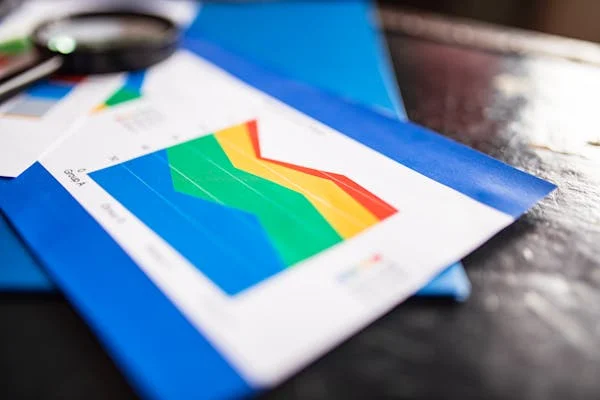Consumers today are more aware than ever. They care about how products are made, where they come from, and the impact they have on the world. With the climate crisis and environmental damage making headlines, more and more people are changing the way they shop. And for businesses, this change is not just a trend—it’s a shift that could define who wins and who loses in the coming years.
1. 73% of global consumers say they would definitely or probably change their consumption habits to reduce environmental impact
Understanding the Shift in Consumer Habits
The number speaks for itself. When nearly three-quarters of consumers say they would willingly change their consumption habits to be more eco-friendly, that’s not just a trend — it’s a transformation. These aren’t passive thoughts either. People are researching, comparing, and shifting their purchases toward brands that help them reduce their carbon footprint.
The real takeaway here? Consumers are ready to make an effort — if you make it easy for them.
Why This Matters for Your Brand
If consumers are open to changing their behavior, that’s your opening. It means they’re open to switching brands. And they’re not just choosing based on price or performance anymore. They’re looking for impact. They’re looking for responsibility.
So, if your brand is not positioned as sustainable, you’re missing out on a huge share of the market.
What You Can Do Today
- Rethink your packaging: Use recyclable materials and make it obvious on the label.
- Communicate your sustainability efforts clearly on your website and products.
- Educate your customers on how using your products contributes to sustainability.
- Highlight case studies or stories of how you’ve made a positive environmental impact.
Don’t just change your product — change how you talk about your product.
2. 66% of consumers are willing to pay more for sustainable goods
Pricing Isn’t the Barrier It Once Was
Here’s the thing: Two out of three consumers are okay with paying a bit more for something sustainable. That means cost isn’t the hurdle many businesses fear it is. If the value and story are there, the sale will follow.
This shift represents a new way of thinking about pricing. Sustainability isn’t just a cost — it’s a value add.
Building Value Through Purpose
If you’re sustainable, you’re not just selling a product. You’re selling peace of mind. You’re helping people feel like they’re doing their part — and that emotional connection is powerful.
Use that in your messaging. Let people know exactly what they’re supporting when they choose you. Is it cleaner oceans? Less plastic in landfills? Fewer emissions?
Actionable Tactics
- Add an eco-friendly badge or certification to your packaging or website.
- Share behind-the-scenes content of your supply chain changes.
- Create a blog series about your journey toward sustainability.
- Introduce a product line that is slightly higher-priced and transparently sustainable, and explain where that extra cost goes.
Transparency is what makes consumers feel good about spending a little more.
3. 81% of millennials expect companies to publicly commit to good environmental practices
Millennials Aren’t Just Buying — They’re Watching
Millennials are not a fringe group anymore. They’re homeowners, parents, and business decision-makers. And they expect the brands they support to walk the talk. In fact, they’re looking for public proof. That means websites, press releases, blog posts, and certifications.
Just being “green” isn’t enough anymore. You need to show it.
What Public Commitment Looks Like
Public commitment can be as simple as a sustainability mission page on your site or as complex as publishing an annual impact report. The important part? Making it real and honest.
And yes — they will check. Millennials are savvy and have grown up alongside greenwashing. They know how to spot the difference between a brand that’s serious and one that’s just using eco-friendly buzzwords.
Ways to Put This into Practice
- Publish a “Sustainability Promise” on your website — short, clear, and to the point.
- Partner with nonprofits or environmental causes and talk about it publicly.
- Issue an annual “State of Sustainability” blog or video series.
- Share your goals — even if you’re just starting — and update people on your progress.
Consistency and honesty build credibility, and credibility builds loyalty.
4. 62% of Gen Z prefer to buy from sustainable brands
A Generation That Buys with Purpose
Gen Z doesn’t just like sustainability — they expect it. For them, it’s not a luxury. It’s a baseline. If your brand doesn’t reflect the values they care about, they’ll scroll past, click away, or skip the purchase entirely.
This generation grew up learning about climate change, seeing the effects of pollution, and engaging with activism online. So naturally, their buying behavior reflects those lessons.
What Gen Z Looks For
They want realness. They want proof. They want brands that speak their language — and not just through flashy ads. They want to see real people, real changes, and real dedication to the environment.
They’re also heavily influenced by social media. If they see you making a difference and doing the right thing, they’ll talk about it. If not, they’ll call it out.
Here’s How to Reach Gen Z
- Make short, real video content on platforms like Instagram Reels and TikTok. Show your sustainability work in action — don’t just talk about it.
- Collaborate with eco-conscious influencers or micro-influencers who already speak to Gen Z.
- Host sustainability challenges or product giveaways tied to eco-friendly goals.
- Avoid polished PR talk. Be transparent, casual, and honest about your progress.
Gen Z buys from brands that align with their identity — make sure your brand earns that place.
5. 57% of consumers are loyal to brands that commit to sustainability
Sustainability Builds Long-Term Loyalty
More than half of consumers will stick with you if you’re doing good for the planet. That’s not just about keeping customers — it’s about building an army of brand advocates who will promote you for free.
Loyalty built on shared values is stronger than loyalty built on discounts.
Loyalty Is More Than Rewards Points
Loyalty today comes from trust. If your customers trust that you care about what they care about, they’ll keep coming back. They’ll tell their friends. They’ll post about you.
And it’s not just about being sustainable once. It’s about committing to it over time.
Tactics That Work
- Start a “Green Customer Club” — a loyalty program that rewards sustainable actions (like recycling packaging, choosing slow shipping, etc.).
- Show appreciation. Send thank-you notes or emails highlighting how their purchase helped the environment.
- Use email marketing to update customers on your sustainability wins. Turn them into part of the story.
- Offer exclusive early access to sustainable product lines or eco-conscious collections.
When people feel they’re contributing to a cause just by supporting your business, loyalty becomes second nature.
6. 77% of consumers say sustainability is important when choosing a brand
Sustainability Is a Core Decision Factor
This stat tells us something critical: sustainability is no longer a bonus — it’s a deciding factor for most buyers. That means when people are choosing between similar products, the greener brand wins.
And it’s not just niche eco-shoppers. This is mainstream now.
Standing Out Through Sustainability
You don’t need to overhaul your entire company overnight. Start by building sustainability into your story and into your customer’s journey. Make it part of the decision-making conversation, just like quality or pricing.
This isn’t about perfection. It’s about showing effort and intention.
Practical Moves to Position Your Brand
- Update your product descriptions to include sustainability benefits. Don’t just say what the product does — say how it helps the environment.
- Make your packaging, sourcing, and process details visible on product pages.
- Include sustainability filters on your e-commerce store (“eco-friendly,” “recycled materials,” etc.).
- Create a comparison chart showing how your products use fewer resources than competitors.
When sustainability becomes part of your brand identity, customers won’t just buy — they’ll believe.
7. 64% of consumers avoid brands that don’t align with their personal values
Values Are the New Filter for Purchases
This stat highlights a powerful truth: people are no longer just buying a product — they’re buying what the brand stands for. More than half of all consumers will actively avoid a brand if it goes against their beliefs. That includes sustainability, ethics, and even how a company treats its workers or sources materials.
It’s Not Just About What You Say — It’s What You Show
You can’t simply tell consumers you’re sustainable or ethical. You have to show it. This generation of shoppers is investigative. They’ll read labels, scroll through your site, and even dig through your social media history.
If your values don’t align with theirs — or worse, if you’re found to be fake — they’ll not only stop buying, they may spread the word.
Here’s How to Align with Consumer Values
- Be clear about your values in your “About Us” page. Make it more than just a founder story — focus on what you believe in.
- Align your product design and sourcing with those values. If you say you support environmental responsibility, use recycled or ethically sourced materials.
- Stay consistent across platforms. What you post on Instagram should match what’s on your packaging.
- Respond to questions and criticism with honesty. Consumers value engagement more than perfection.
When your values match your customer’s, you become more than a product — you become part of their lifestyle.
8. 70% of consumers believe brands should be environmentally responsible
The Expectation Is Set — Now It’s Time to Deliver
Seven out of ten consumers aren’t waiting for you to be environmentally responsible — they expect it. That’s a big shift. Responsibility used to be optional. Today, it’s required. If your brand doesn’t step up, someone else will.
Environmental responsibility isn’t just for “green” brands anymore. It’s for all brands.
How Responsibility Looks in the Real World
You don’t need to solve climate change. But you do need to take meaningful steps that are visible and authentic. Whether it’s reducing plastic, using local materials, or sourcing sustainably, the key is to be proactive and transparent.
And remember — if you’re not telling your audience about your efforts, they might assume you’re not making any.
Make Responsibility Part of Your Brand DNA
- Audit your supply chain. Where can you cut waste, reduce energy, or source locally?
- Tell the story of your environmental improvements through a blog or social post series.
- Feature a sustainability metric on your homepage (e.g., “2,000 kg of plastic saved this year”).
- Get third-party certifications to show you’re serious — like Fair Trade, FSC, or Carbon Neutral.
The more specific and measurable your actions, the more powerful your message becomes.
9. 90% of Gen Z believe companies must take responsibility for environmental issues
Gen Z Is Setting the Standard
If you’re not already catering to Gen Z’s expectations, now is the time. Nearly all of them believe companies have a duty to the planet. That’s a sharp contrast to older generations, who might see sustainability as a bonus or an add-on.
Gen Z wants brands to act like leaders — not followers — when it comes to environmental issues.
What Responsibility Means to Gen Z
It’s not just about carbon footprints or recyclable packaging. It’s about how you operate. Do you pay fair wages? Do you support local communities? Do you speak out when it matters?
They’re watching — and they care about everything you do.
Actions That Build Trust with Gen Z
- Share long-term sustainability goals on your site and social media — even if you’re just getting started.
- Support environmental causes with real money or time. Partner with nonprofits and get your team involved.
- Use storytelling. Share employee voices, behind-the-scenes efforts, or eco-focused milestones.
- Be humble and honest. If you mess up, admit it. If you’re improving slowly, explain why.
Gen Z wants to support brands that are human, transparent, and committed — even if the journey isn’t perfect.
10. 72% of consumers say they’re actively buying more environmentally friendly products than they were five years ago
Buying Habits Have Shifted — Permanently
When 72% of people say they’re actively buying more eco-friendly products than they did five years ago, it means we’re witnessing a lasting change, not a temporary trend. This change spans everything — from food and fashion to beauty, electronics, and beyond.
Eco-conscious shopping is no longer just for a niche group. It’s mainstream, and it’s growing.
Why This Trend Will Continue
People are learning more. They’re seeing the impact of their purchases, and they’re being educated by brands, media, and even social media influencers. What’s more — they’re realizing that eco-friendly products don’t have to sacrifice quality or style.
In fact, they’re often better. Better made. Better for the future. Better for their peace of mind.
How to Meet This Demand as a Brand
- Make sure your product descriptions highlight your environmental benefits.
- Introduce product labels like “carbon neutral,” “locally sourced,” or “low-waste” that are clear and easy to understand.
- Feature before-and-after comparisons: how switching to your brand reduces waste, energy, or emissions.
- Promote user-generated content of customers making eco-friendly choices with your product.
Position your brand as the better choice not just for the customer — but for the planet too.
11. 88% of consumers want brands to help them be more environmentally friendly
People Want Guidance, Not Just Products
This is where a lot of brands miss out. They assume customers already know what to do. But the truth is, most people want help. They want brands to educate and guide them toward greener habits. In fact, 88% expect it.
This is a golden opportunity to not just sell, but lead.
Educating Your Customer Without Preaching
People don’t want to be told they’re doing something wrong. They want to be empowered with better choices. So instead of criticizing habits, show them better ones — and make it easy.
This creates a bond. You’re no longer just a store. You’re a mentor, a guide, a community.
How to Make Your Brand Their Eco-Guide
- Create easy how-to guides on your blog, like “How to Reuse Our Packaging” or “3 Simple Swaps for a Greener Home.”
- Add QR codes on product packaging that link to short educational videos or tips.
- Send emails with fun sustainability challenges or product tips they can try each week.
- Build a community around eco-living. Host contests or customer stories showing how people are reducing waste with your products.
When you become the go-to source for sustainability tips, your brand becomes top of mind — and heart.
12. 73% of Gen Z would pay more for sustainable products
Gen Z Puts Their Wallet Where Their Values Are
This stat is a marketer’s dream. It proves Gen Z isn’t just saying they care — they’re backing it up with their money. Nearly three-quarters are willing to spend more for a product if it’s sustainable.
That’s huge. And it tells us that for this audience, price isn’t everything — values are.
It’s Not About the Price — It’s About the Story
When Gen Z pays more for sustainability, they’re not paying for features. They’re paying for meaning. They want to feel like they’re doing something right with their money.
They want a story they can share. A choice they can be proud of.

How to Make Gen Z Proud to Buy from You
- Use storytelling in your product pages — explain how the product is made, where the materials come from, and who made it.
- Be loud about your values on social media. Use video, behind-the-scenes content, and team spotlights.
- Offer bundles or limited editions with eco perks — like planting a tree for every purchase or offsetting the shipping emissions.
- Let your customers track their impact. A small calculator or “You saved X plastic by buying this” note goes a long way.
For Gen Z, sustainability is about identity. So make your product part of the lifestyle they want to live.
13. 54% of consumers have reduced or stopped buying from a brand over sustainability concerns
Consumers Are Willing to Walk Away
This isn’t just about buying more sustainable products. It’s also about refusing to buy from companies that don’t make the cut. Over half of consumers have already taken action by cutting ties with brands they see as unsustainable. That’s a wake-up call for any business still ignoring this shift.
It’s no longer enough to be silent. Silence can be seen as complicity — or worse, indifference.
How Brands Lose Trust
It’s not always about doing something wrong. Sometimes, it’s about doing nothing. Inaction, lack of transparency, or outdated practices can push customers away — fast.
Today’s consumers do their homework. If they find that your brand lags behind in environmental responsibility, they won’t hesitate to switch — even if they’ve been loyal for years.
What You Can Do to Keep Them with You
- Audit your current operations. Are there areas where you’re still relying on harmful practices? Start making plans to improve.
- Communicate your timeline — even if you’re not perfect yet, customers want to know you’re moving forward.
- When asked tough questions on social media or in reviews, answer them. Be honest about what you’re doing and what’s coming.
- Avoid vague terms like “eco-friendly” without context. Give facts and explain your sustainability standards.
Staying proactive and open earns you trust — and helps you keep it, even through growing pains.
14. 50% of global consumers say they have switched products or services because a company violated their environmental values
Environmental Values Are Deal-Breakers
Half of the global market is ready to switch brands based on environmental ethics. That’s massive. It means values now drive consumer decisions just as much as price, quality, or convenience.
Even if a product works well, if the company behind it doesn’t share the consumer’s environmental principles, they’ll walk away.
The Risk of Misalignment
What happens if your brand takes a shortcut? Or if you quietly partner with a supplier that pollutes? Or if you ignore sustainability completely?
Well, consumers find out. And when they do, half of them will leave — and possibly never come back.
Turning Values into Your Competitive Edge
- Conduct a supplier audit and drop any vendors that don’t align with your sustainability goals.
- Create a simple “Our Environmental Values” section on your website that clearly outlines your standards.
- Train your team — from sales to customer service — on your sustainability mission so they can speak to it with confidence.
- Stay engaged with your audience. Ask for feedback and show how it shapes your decisions.
When your environmental values are genuine, bold, and visible, they become a reason customers choose you — and stick with you.
15. 85% of people globally indicate they have shifted their purchase behavior toward being more sustainable in the past five years
Sustainability Has Gone Global
This isn’t just a Western trend or limited to certain industries. It’s global. A full 85% of people worldwide have changed how they shop — with sustainability at the core of their new habits.
The beauty of this change? It’s being led by regular people, across all age groups, backgrounds, and income levels.
What This Means for Every Business
Whether you sell in a local market or ship internationally, your customers are thinking differently now. They’re not just looking for savings — they’re looking for significance. They want to feel that their purchase is making a small, positive impact.
And if your brand can help them do that, you win their attention, loyalty, and respect.
How to Align with the Global Consumer Mindset
- Localize your sustainability messaging. Tailor it to regional concerns — whether it’s plastic pollution, water conservation, or waste reduction.
- Share how your supply chain supports communities around the world — not just where you’re headquartered.
- Use visual storytelling to showcase sustainable practices — especially in email newsletters or social media content.
- Offer options. For instance, let shoppers pick “carbon neutral shipping” at checkout or donate to a reforestation project with every order.
By supporting your customer’s desire to live better — no matter where they are — you position your brand as a partner in positive change.
16. 60% of respondents believe sustainability is an important purchase criterion
Sustainability Is Now a Key Buying Factor
Gone are the days when sustainability was seen as a luxury or bonus feature. Today, 60% of people actively consider it when making a purchase. This means it’s not just something they notice — it’s something they prioritize.
That’s big. It puts sustainability right up there with price, design, and product reviews as a deciding factor.
The Importance of Highlighting Sustainability Early
If sustainability influences the buying decision, don’t wait until the checkout page to bring it up. Make it one of the first things your potential customer sees. Whether someone is browsing your homepage or reading a product tag in-store, they should instantly understand your eco impact.
You don’t need to overdo it — just make sure it’s visible and clear.
Ways to Put Sustainability at the Forefront
- Use icons, badges, or banners on your website that say “low-waste,” “organic,” or “100% recyclable.”
- Share short stats on each product page like “Made with 80% less water” or “Plastic-free packaging.”
- Reinforce your messaging through customer reviews. Encourage reviews that mention eco-conscious elements.
- If you have a storefront, place signage near the entrance that shows your sustainability promise in simple terms.
The earlier customers connect your product with their values, the better chance you have of converting and keeping them.
17. 67% of purpose-driven consumers make brand choices based on shared values
Shared Values Drive Stronger Connections
Purpose-driven consumers don’t just buy what’s cheap or convenient. They buy from brands that believe what they believe. That’s where this stat becomes critical: 67% of these buyers choose brands that reflect their values.
When people find a brand that matches their worldview — about sustainability, fairness, or ethics — it feels personal. It’s about alignment. And alignment breeds loyalty.

Make Your Values a Cornerstone of Your Brand
This is where your storytelling comes in. It’s not just about what you sell. It’s about who you are and what you stand for. Your mission, your sourcing, your donations, your partnerships — they all matter to people who care.
And when you show them clearly, you make customers feel like they’re joining a movement, not just making a purchase.
How to Embed Values into Your Brand Strategy
- Rewrite your brand mission and values with sustainability in focus — not just on paper, but in everything you do.
- Share impact stories on your blog and newsletter: real results, real progress, real people.
- Make your founder or team visible and vocal about your sustainability efforts — this builds connection.
- When you partner with other brands or charities, choose ones that reflect your values and explain why you’ve chosen them.
The more visible and consistent your values are, the easier it is for purpose-driven consumers to see themselves in your brand — and stick with you.
18. 44% of consumers globally consider sustainability an important part of their purchase decision
Almost Half of the World Agrees
This stat shows global unity: nearly half of all consumers, regardless of where they live, are making sustainability part of how they shop. That includes developing markets, emerging economies, and rural areas — not just major cities.
This is your chance to make sustainability universal in your marketing, no matter the geography.
Why This Trend Spans Borders
Climate change is a global issue. People are experiencing real effects — extreme weather, resource scarcity, and rising costs. As a result, there’s a growing consciousness around what we buy and who we buy it from.
When sustainability becomes a solution, brands that offer it gain a competitive edge across different demographics.
Actionable Tips to Appeal to a Global Audience
- Use plain, universal language. Instead of technical terms, use phrases like “good for the planet,” “less waste,” or “made to last.”
- Avoid cultural assumptions. What counts as “sustainable” may vary by region. Research what matters most to each market.
- Provide regional sustainability impact data. If you reduce water use or emissions, break it down by geography where possible.
- Use local ambassadors or influencers to explain your mission in ways that resonate with different audiences.
Sustainability isn’t just a niche — it’s a global expectation. Meeting it well makes your brand future-ready, everywhere.
19. 59% of consumers say transparency about environmental impact increases brand trust
Trust Is Built on Transparency
Consumers don’t just want to hear that your brand is “sustainable.” They want to see it. And according to this stat, 59% of them will actually trust you more if you show the environmental impact of your products and actions.
That trust is priceless. It leads to loyalty, recommendations, and long-term growth. And the best part? Transparency doesn’t cost much — it just takes honesty.
What Real Transparency Looks Like
It’s not about sounding perfect. People don’t expect that. In fact, they trust you more when you share your struggles and goals, not just your wins. Whether you’re still transitioning to better packaging or offsetting only part of your emissions, showing the full picture makes you believable.
That believability makes customers feel safe — and confident in their decision to support you.
How to Be More Transparent Starting Today
- Share your product footprint. A small graphic showing water, energy, or carbon use per item works wonders.
- Add a “Sustainability Progress” page on your website. Break it into goals, current actions, and future plans.
- Use blog posts or short videos to explain challenges you’re facing — like sourcing issues or packaging transitions.
- Share results from third-party audits or certifications — even partial compliance is better than silence.
Transparency isn’t about being perfect. It’s about being human. And human brands build lasting trust.
20. 78% of U.S. consumers believe that companies should be environmentally responsible
Environmental Responsibility Is the New Normal
This stat isn’t optional. It’s a mandate from 78% of U.S. shoppers who now believe every company — large or small — should be environmentally responsible. That includes brands in every industry: fashion, tech, beauty, food, and even finance.
If you’re in business, they believe you have a role to play in protecting the planet.
Why This Is a Business Opportunity
It might feel like a burden, but environmental responsibility actually opens doors. It’s a chance to innovate, differentiate, and build deeper customer connections. The businesses that adapt quickly aren’t just doing good — they’re getting ahead.
The ones that don’t? They risk being left behind or even publicly criticized.

How to Embrace Environmental Responsibility Without Overwhelm
- Start with one product or process. Maybe it’s a plastic-free version or energy-efficient production.
- Involve your team. Make sustainability part of every department — from marketing to shipping.
- Share your roadmap publicly and update it often. Customers love seeing progress in action.
- Celebrate small wins. Every improvement counts, and every story shared builds goodwill.
You don’t have to be perfect to earn respect — you just have to take responsibility and show consistent effort.
21. 65% of consumers research brands’ sustainability practices before purchasing
The Research-First Buyer Is Here
Today’s shopper doesn’t just browse. They research. And 65% of them are actively looking into your brand’s sustainability before they ever click “add to cart.” That means you’re being evaluated before you even know it.
If they can’t find the answers they’re looking for, many will move on — and you won’t even know you lost them.
What They’re Looking For (and Where)
Most consumers will check your website first. Then they’ll scan your product pages, look at social media, and maybe even read third-party reviews. If your sustainability story is hard to find — or missing altogether — that’s a red flag.
So, you need to make your efforts clear, consistent, and searchable.
How to Make Sustainability Easy to Discover
- Add a prominent link on your homepage to your sustainability section.
- Include bullet-point facts or icons on every product page showing eco-friendly benefits.
- Use social media stories to show behind-the-scenes progress or product origins.
- Make sure your product packaging includes a QR code linking to sustainability info.
You don’t have to shout — just make sure when someone looks, they find something honest and helpful.
22. 71% of consumers consider the sustainability of packaging when making purchases
Packaging Is No Longer Just a Box
Today, the box matters just as much as what’s inside. With 71% of consumers saying they factor packaging sustainability into their buying decision, it’s clear — eco-conscious packaging is now part of your product’s value.
People don’t want to deal with excess plastic, foam, or anything that feels wasteful. If your packaging screams “harmful,” it might be the only impression they ever get of your brand.
Sustainable Packaging Sends a Powerful Message
Think about it. The packaging is often the first physical contact someone has with your brand. It’s your handshake, your first impression, and sometimes your last chance to build loyalty.
If it’s thoughtful, reusable, recyclable, or minimal — that speaks volumes.
How to Level Up Your Packaging Game
- Switch to recyclable or biodegradable materials where possible. Even one layer makes a difference.
- Print minimal or soy-based inks. Loud, overly decorative packaging often feels wasteful.
- Encourage reuse. Design packaging that becomes storage, décor, or even compost.
- Include a “how to dispose responsibly” card inside the package — this educates and builds credibility.
Don’t forget: people share unboxing experiences. Make yours a moment that feels responsible and modern.
23. 49% of consumers have boycotted brands not aligned with their values
People Aren’t Just Talking — They’re Acting
This is a clear warning: almost half of consumers have actively boycotted a brand because its values didn’t match their own. That means silence, inconsistency, or poor practices aren’t just risky — they’re business threats.
Today’s consumers know they have power, and they’re not afraid to use it.
What Triggers a Boycott?
It’s not always a scandal. Sometimes it’s smaller but very visible missteps: vague claims, bad press, or ignoring customer concerns. And with social media, one issue can spread instantly and affect thousands of purchase decisions.
That’s why alignment — between your brand’s words and actions — is key.
How to Stay in Sync with Your Audience’s Values
- Monitor social sentiment. If your audience is talking about plastic waste, respond with changes and updates.
- Never claim sustainability unless you can back it up — greenwashing is one of the biggest boycott triggers.
- Engage your community. Ask what matters most to them and reflect that in your products or initiatives.
- If your brand makes a mistake, own it publicly. Transparency in difficult times can rebuild trust faster than silence.
Every decision you make becomes part of your brand story — and your audience is reading every chapter.
24. 86% of consumers expect businesses to take action on environmental issues
Expectations Have Turned Into Demands
With 86% of consumers now expecting companies to take environmental action, sustainability is no longer a nice to have — it’s a basic requirement. Customers aren’t just watching what you say, they’re checking what you do.
The pressure is high — but so is the opportunity.

Action Speaks Louder Than Ads
Words aren’t enough anymore. Green campaigns without real-world action fall flat and even create backlash. People want to see results — in operations, sourcing, shipping, and product lifecycle.
Your job as a brand? Make those actions visible and easy to understand.
Turning Expectations Into Customer Love
- Launch an initiative customers can be part of — tree planting, product recycling, or donation matching.
- Publish a simple “action timeline” on your site. List recent achievements, current projects, and future goals.
- Report on key impact metrics in every product launch email or seasonal update.
- Partner with environmental organizations and co-brand your impact.
When people see your business not just talking, but doing, they’ll respect you — and reward you with loyalty.
25. 55% of U.S. consumers report that sustainability influences their purchase decisions
Sustainability Is a Deciding Factor for Over Half the Market
In the U.S. — one of the world’s most competitive markets — more than half of consumers now say that sustainability influences what they buy. That means sustainability isn’t a niche demand. It’s mainstream.
This stat changes the game for brands in nearly every sector — because once you realize sustainability sways the sale, it becomes something you can’t afford to ignore.
Your Competitive Edge Starts with Purpose
Think about two similar products, priced nearly the same. If one has a sustainability story and the other doesn’t, over 50% of shoppers will pick the greener choice. This gives smaller or emerging brands a chance to compete — not by cutting prices, but by building values into the product experience.
You win not just with product quality, but with principles.
How to Build Influence Through Sustainability
- Add a sustainability score or short visual impact chart on product pages.
- Include a line in every product email about the environmental benefits of the item.
- Get customer testimonials that speak to why people feel good about buying from you.
- Train your support team to highlight your eco-efforts in customer interactions.
When sustainability is part of your message at every step of the journey, it becomes part of the purchase reason — not just a bonus.
26. 63% of consumers say they’re more likely to recommend a sustainable brand to others
Sustainability Drives Word of Mouth
This is huge. Nearly two-thirds of consumers are more likely to recommend a sustainable brand. That’s not just satisfaction — that’s advocacy. And word of mouth is one of the most powerful (and free) marketing tools any business can have.
When your sustainability efforts inspire your customers to talk about you, you’re creating an unpaid sales force.
How Recommendations Actually Happen
It’s not always through referrals or review sites. It could be a casual comment: “Hey, I switched to this brand because they’re way more eco-friendly.” Or a social media post with a sustainable packaging unboxing. Or even someone answering a question in a Facebook group.
Every positive mention builds brand equity — and brings new people into your orbit.

Turning Your Customers Into Brand Champions
- Make sustainability shareable. Include a short story on your packaging that customers will want to talk about.
- Encourage social media posts with eco-themed hashtags related to your brand.
- Launch a “customer spotlight” series to feature people making a difference using your products.
- Offer small rewards for reviews that mention sustainability.
People love recommending brands that make them feel smart, conscious, and forward-thinking. Make sure you give them that story to share.
27. 74% of consumers expect brands to take a stand on social and environmental issues
Taking a Stand Isn’t Optional Anymore
Three out of four consumers expect you to do more than just sell. They want you to stand for something. And that includes environmental issues — which are now front and center in global conversations.
This is about leadership. And for modern brands, being neutral or silent can be interpreted as avoidance.
What It Means to “Take a Stand”
Taking a stand doesn’t mean being loud or confrontational. It means being clear, confident, and committed. Whether it’s reducing emissions, fighting plastic waste, or investing in clean energy — people want to see your position, not just your promotions.
The risk of staying silent is losing relevance in a values-driven marketplace.
Ways to Take a Stand Authentically
- Create a dedicated page outlining your position on key sustainability issues.
- Use your platform to support causes that align with your business — donations, content, or partnerships.
- Train your marketing team to speak confidently about your sustainability mission in every campaign.
- Make your brand part of public awareness moments — like Earth Day, World Environment Day, or Climate Week.
The more aligned and consistent your stand is, the more it strengthens your identity — and builds long-term trust with your audience.
28. 61% of consumers say it’s important that the companies they buy from take care of the planet
Caring for the Planet Is Now a Brand Expectation
This stat is simple but powerful. Sixty-one percent of consumers want the brands they support to care. That means being mindful of the planet isn’t just a business strategy — it’s a customer requirement.
People are tired of companies that only care about the bottom line. They’re looking for businesses that contribute to the greater good. If you show that you care, they’ll care back — with loyalty, advocacy, and repeat purchases.
From Responsibility to Relationship
When you show that your brand acts with intention — whether it’s cutting down on emissions or sourcing locally — you build something stronger than a business transaction. You build a relationship.
And in a world full of noise and choice, relationships are what keep customers close.
How to Show You Truly Care
- Talk about your environmental goals like you would a personal mission — with emotion and clarity.
- Show faces, not just facts. Use stories from your team, suppliers, or partners who are doing the work.
- Celebrate small wins publicly. Did you eliminate plastic from just one product? Share it.
- Let your customers contribute. Whether it’s rounding up a purchase for an environmental cause or returning packaging, give them simple ways to help.
People remember how you make them feel. When your brand makes them feel like they’re helping the planet, they’re far more likely to stay with you.
29. 80% of younger consumers consider environmental impact in their purchase decisions
The Future Market Is Already Here
When 80% of younger consumers — think Millennials and Gen Z — actively consider environmental impact, you’re looking at the dominant buyers of today and tomorrow. These are the people shaping trends, influencing their peers, and driving social conversations.
They won’t compromise. And if you want long-term success, you have to meet them where they are.
Why This Generation Matters So Much
These consumers are digital natives. They read product labels, search online, follow climate-related news, and hold companies accountable in public spaces. If your sustainability game is weak — or hidden — they’ll call it out or walk away.
But if you get it right? They’ll become your most loyal and vocal supporters.
How to Connect with Younger, Eco-Driven Audiences
- Make sure your environmental efforts are baked into your brand, not tacked on as marketing.
- Focus on visual storytelling — especially through short-form video and image-led content.
- Collaborate with young influencers who live and breathe sustainability — authenticity matters more than follower count.
- Get creative with your products. Offer carbon offset options, biodegradable kits, or “low impact” collections.
Winning younger consumers means showing them that you share their values — and that you’re working hard to turn those values into action.
30. 58% of consumers are more likely to trust a company that clearly communicates its sustainability efforts
Clear Communication Builds Real Trust
Trust is everything in today’s market. And for 58% of consumers, that trust starts with how you communicate your sustainability efforts. Not what you say in ads, but how transparent, clear, and consistent you are across your channels.
It’s not about fancy words or big claims. It’s about truth. People want to know what you’re doing, why you’re doing it, and how it’s helping.
The Power of Clear and Honest Messaging
When you communicate clearly — even about things you haven’t perfected — people appreciate it. They know no company is perfect, and what matters most is that you’re trying, learning, and improving.
Being real makes your brand approachable. Being clear makes it trustworthy.

How to Communicate Sustainability with Clarity
- Keep your sustainability messages simple and consistent. Use plain language — not jargon.
- Use numbers, visuals, and timelines. Instead of saying “We’re reducing waste,” say “We’ve cut plastic use by 35% in 12 months.”
- Dedicate a section of your homepage or product pages to your sustainability promise — keep it front and center.
- Don’t bury your policies. Make your goals and actions easy to find, easy to understand, and easy to believe.
Clarity is the final bridge between intention and impact. Build it well, and customers will cross it with you.
Conclusion:
If you’ve read this far, one thing is clear — sustainability isn’t just a passing trend. It’s becoming the backbone of consumer behavior.
These 30 stats reveal a world of opportunity for brands willing to act with purpose. From building trust and loyalty to increasing word-of-mouth and long-term sales, the data proves that putting the planet first is also good business.





















